Since the first Galaxy Z Fold phone was released four years ago, Samsung has had virtually no competition in the West.
Huawei has released a slew of book-style foldables that no one will buy because they don’t run Google; Oppo, Vivo, and Xiaomi have pushed their models in China but not elsewhere; and unusual players such as Pablo Escobar’s brother have run a slew of small offerings (and sometimes scams) to fill out the marketplace.
But, eventually, that changes. Honor has officially launched the Magic Vs foldable in places throughout the world (excluding North America), and at a price intended to undercut its huge Samsung competitor.
The Magic Vs has the tech to put Samsung in its place, with a hinge that closes completely flat, a rather strong triple rear camera, and an unusually compact frame.
The software experience suffers from a predicted lack of polish, and there are a few luxury features I’d want to see at this price, making the Z Fold 4 a better option for most. But it’s a relief to see Honor competing with Samsung.
Design & build
- Hinge that closes fully flat
- Exceptionally thin for a foldable
- No IP rating
The most intriguing decision Honor made in building the Magic Vs was to construct it first as a phone and then as a foldable.
That is, it is meant to function as effectively as possible while closed, offering you something similar to a typical smartphone.

To that end, the Magic Vs is slim – only 12.9mm thick when closed, making it only slightly heavier than the Samsung Galaxy S23 Ultra. Don’t get me wrong: it’s still chunkier than pretty much any normal slab phone, but not by much.
Importantly, Honor has made certain that the phone shuts flatly. Samsung’s newest foldables continue to close in a wedge form, with a little gap between the two parts of the display.
The Magic Vs, on the other hand, seals shut and feels sturdy and safe when closed. If anything, it’s a bit too snug – it’s tough to open with one hand, and even with both, it seems like a battle to unfold the phone.
That firmness likely aids the haptics, which have a comforting heaviness to their buzzes and contribute to the phone’s premium feel in the hand.
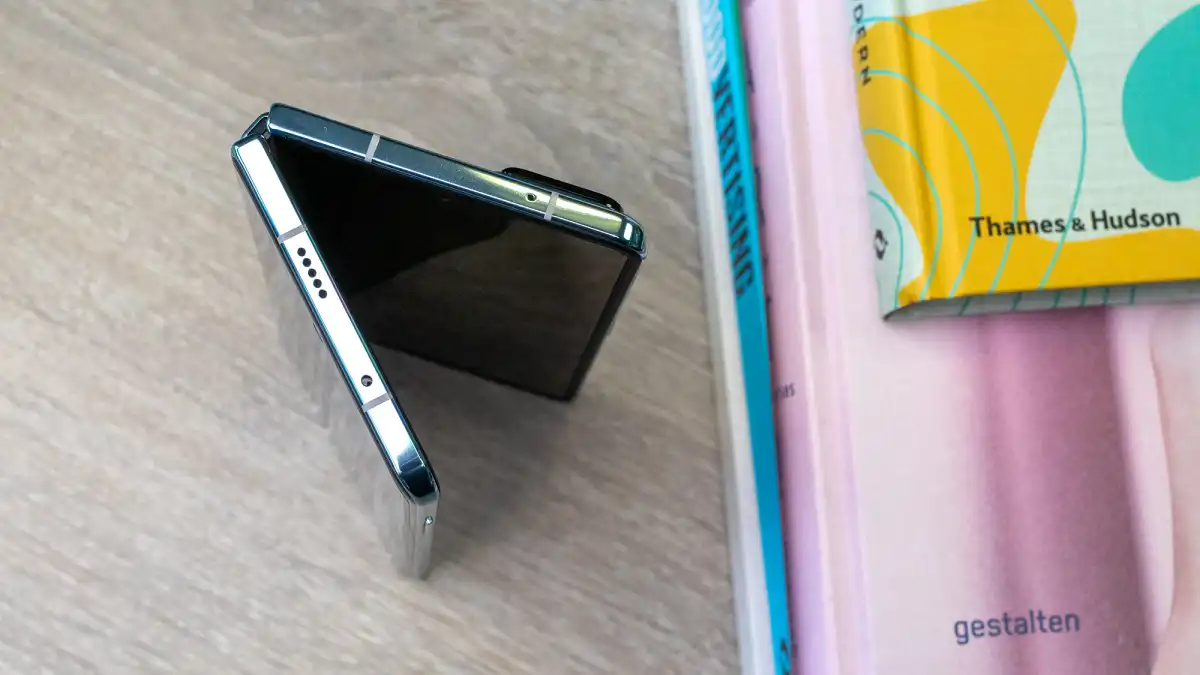
Honor boasts about how much it simplified the hinge for the Vs – down to just four components, purportedly – but part of the price is that it’s not as capable as the Z Fold 4 at sitting open at various angles, with the screen slowly wobbling open if you attempt to hold it up.
Honor has made sure that when the phone closes, it closes flat
The big, unbalanced camera module doesn’t help. I enjoy the aesthetic of this – a slightly curved rectangle set against the phone’s cyan or black body – but it protrudes enough to make the phone unsteady when lying down, and its weight adds to the imbalance when the screen is half open.
There’s one more drawback to the design: whereas Samsung has waterproofed its latest foldables, the Magic Vs has no IP classification at all, and Honor has done little to imply you can safely get this phone wet. It withstood some mild rain during testing, but I wouldn’t trust it with much more.

As is typically the case with foldables, longevity is difficult to anticipate, and even Samsung models have frequent troubles. Only buy one of these if you can afford for it to break down and, ideally, if you’re covered by adequate insurance. This gives Samsung an advantage because it has more broad repair facilities to which you may turn if necessary.
Screens & speakers
- Excellent, tall 120Hz AMOLED outer display
- Square-ish 90Hz inner display
- Decent, but quiet, speakers
As I previously stated, Honor chose to focus on optimizing the Magic Vs to perform properly while closed. Keeping this in mind, the manufacturer actually put a superior panel on the exterior of the phone than on the inside.

The outer cover display is a 6.45in 120Hz AMOLED panel with a 10802560 resolution. It features a quicker refresh rate and greater resolution than the inner screen, and it runs brighter, with characteristics that are nearly identical to most flagship phone panels, save for the lack of LTPO technology for dynamic refresh rate.
I’ve found myself utilizing the phone’s outside display considerably more than the inner one – as appears to be intended – and it’s never seemed like a sacrifice in comparison to any other phone I’ve reviewed. It has a nice form, is a reasonable size, and looks great.
However, the internal display is a little more restricted. The main difference is the decrease in refresh rate to 90Hz, but it’s also a little darker and less colorful than the other screen. It’s not an awful display, but you can tell the difference.
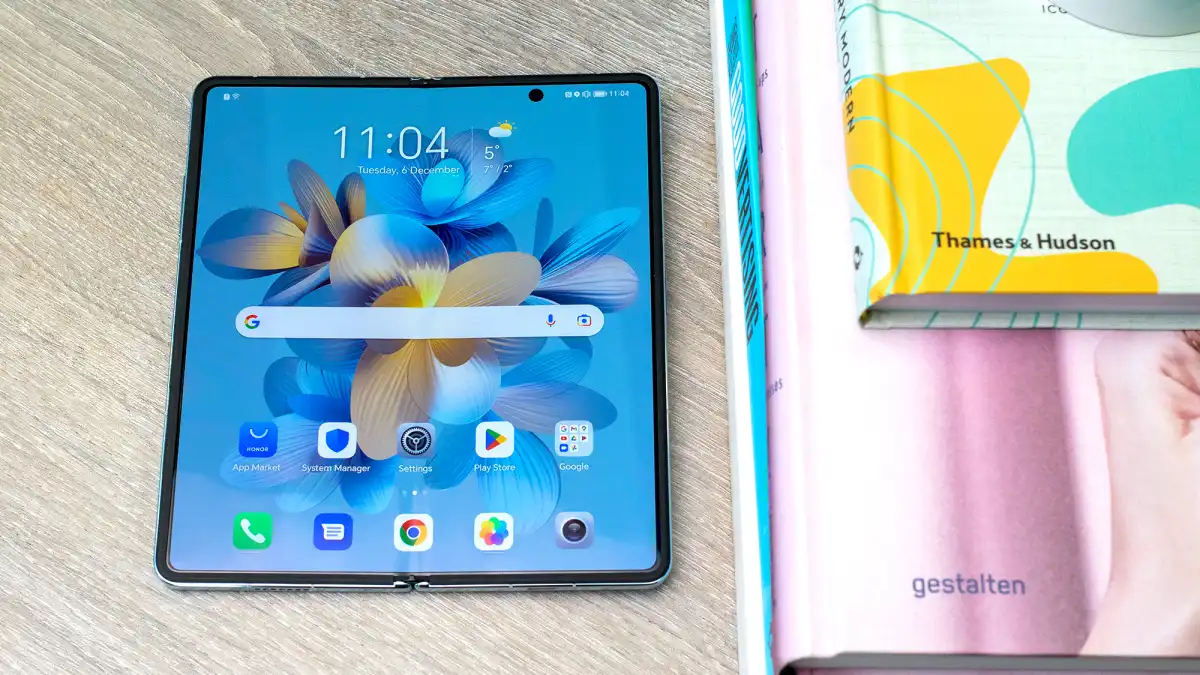
There is a wrinkle in the centre, like with every folding phone. It’s difficult to see straight on, but it’s plainly visible from an angle and deep enough to notice when you swipe over it. If you want a straight comparison, I’d say the crease here is comparable to that of Samsung’s Fold, and more obvious than that of Oppo’s China-only Find N2.
I’ve found myself using the outer display much more than the phone’s inner one
The speakers are one of the phone’s minor flaws. I don’t generally care about phone speakers, but they are quieter and tinnier than I’d anticipate from a phone this size. Honor has also placed both on the front half of the phone, which means they’re on the same side when the phone opens, destroying the stereo impression.
Specs & performance
- Flagship-level Snapdragon 8+ Gen 1 chip
- 12GB RAM and 512GB storage
Honor has spared no expense when it comes to power. The Snapdragon 8+ Gen 1 CPU in the Magic Vs is not the most recent flagship chip from Qualcomm, but it is still modern and strong enough to keep up with the most demanding tasks you can accomplish on a smartphone.
Honor has also opted to keep things simple for the worldwide launch, with only one version available, packed with 12GB of RAM and 512GB of storage. That’s more than Samsung provides by default, which is another reason the Honor may be appealing based just on pricing.
When it comes to testing applications, the Magic Vs falls below some of the most recent slab flagships, although it is a close match for the Z Fold 4.
It should be noted that there is a variation in graphics performance between the phone’s two screens. While the outer screen has a better pixel density, the bigger inner screen has a higher overall pixel count. That implies it achieves lower frame rates in GFXBench graphics tests and runs games slightly slower. Of course, this is true for any foldable book, but it’s worth noting.
In addition to 5G, Wi-Fi 6, Bluetooth 5.2, and NFC, the phone’s networking capabilities are standard.
In terms of biometrics, there is no in-display fingerprint sensor, as is customary with foldables, but one is incorporated into the power button and works well. Face unlock is also an option.
Camera & video
- Impressive triple rear camera
- Versatile setup
- Two identical selfie cameras
Most foldables make certain sacrifices in terms of cameras. That’s true here as well – Honor’s greatest camera is in its Magic 5 Pro flagship, not the Magic Vs – but I’ve been pleasantly surprised by how competent the offering here is.
Let’s start with the rear cameras, which include a 54Mp, f/1.9 primary camera, a 50Mp ultrawide camera, and an 8Mp telephoto with 3x optical zoom.
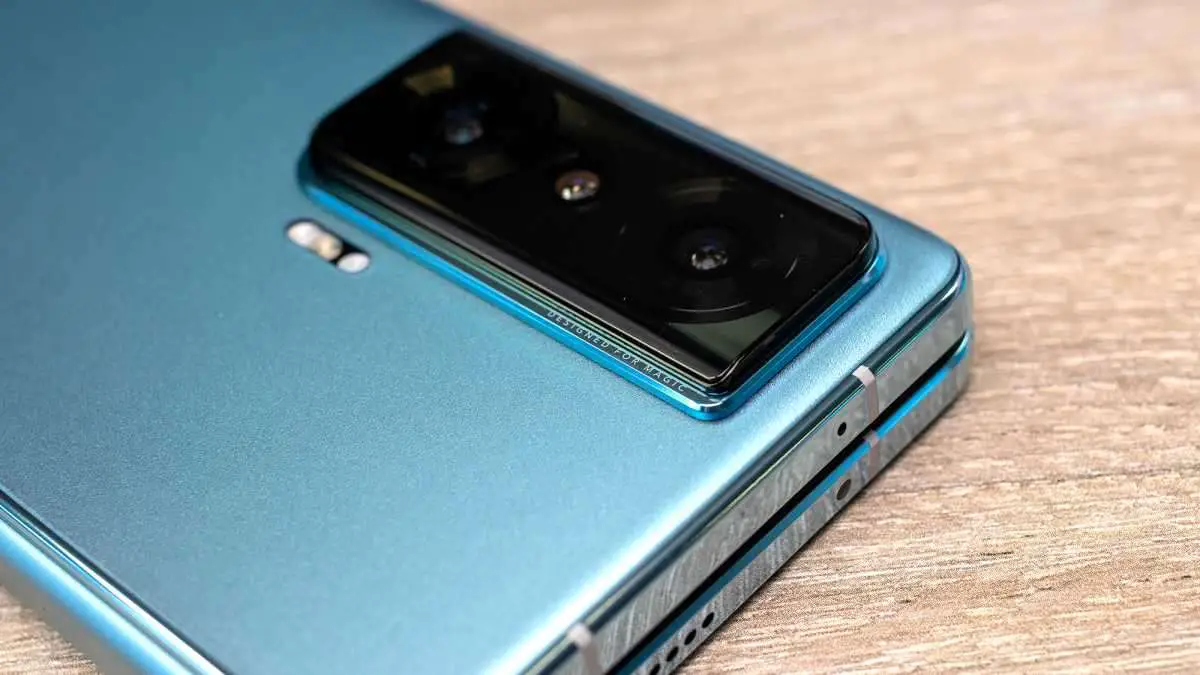
The main camera performs admirably, as one would expect from a phone at this price. Even in low light, shots are clear and detailed, with a good dynamic range. Colors lean toward the bright, aggressive, and over-saturated, but rarely go so far as to appear completely artificial.
The phone’s nighttime and low light performance isn’t up to par, but it’s more than capable of taking detailed shots of a nighttime cityscape, only occasionally stumbling on how to handle bright lights within an otherwise dark frame – a problem even the iPhone 14 Pro Max struggles with, so the Magic Vs is in good company.


The 50Mp ultrawide fails to impress. Despite the equal sensor resolution, there is a noticeable loss of clarity when switching to this lens, which is accentuated by lower illumination. The dynamic range suffers as well, with colors appearing darker and flatter than with the primary camera.
It’s not a horrible camera, and it’s still useful for group shots or panoramic panoramas, but don’t let the megapixel count mislead you into believing it’s on par with the primary lens.



Fortunately, the telephoto lens is superior. It has a 3x optical zoom lens, a camera app shortcut for 10x, and the ability to go as far as 30x by pinching in.
Photos shot at 3x magnification include low noise, a lot of detail, and a nice color match for the primary photographer. Even the 10x option has a noticeable reduction in quality, producing photographs with that soft watercolour appearance even in decent illumination, so I wouldn’t go too far with this magnification. Here are some comparative photos at 3x and 10x settings:


You get two selfie cameras, one on each display, so you can take photographs or make video calls. To keep things simple, Honor has outfitted both display with the same 16Mp, f/2.4 camera, so there’s no need to choose one over the other in terms of image quality.
Both cameras produce excellent selfies, with plenty of detail and realistic skin tones. The algorithmic portrait mode also excels, with a variety of bokeh choices and superb edge recognition that handles my hair’s wispy ends nicely, with only a few stray strands trapped in the blur.
Video recording is limited to 4K@60 from the back lenses and 1080p@60 from either selfie shooter, and is normal for Android (that is to say, it’s nice but not as good as an iPhone). The biggest disadvantage is that without optical image stabilisation on the main back camera, you won’t be able to capture very steady footage when filming on the go.
Battery & charging
- Big battery that runs all day
- Fast wired charging
- No wireless charging
Despite producing a slimmer foldable than Samsung, Honor has managed to include a larger battery.
The 5000mAh capacity here is among the finest you’ll find in any flagship phone, and even with two screens to contend with, it makes the Magic Vs a phone that can be used all day.
The only real downside is that there’s no wireless charging support
In fact, I put it through its paces while covering the MWC 2023 trade event, where it received its worldwide debut. That entails a lot of roaming data, hotspotting my laptop, and shooting a lot of images. Despite this, I generally had 30% of the power remaining by the time I got into my hotel bed.
With 66W wired charging through USB-C, charging is also quick. I discovered that it could recover 40% of the battery in only 15 minutes and 77% in half an hour – which is quick enough for virtually everybody.
The only major drawback is the lack of wireless charging capabilities, which is the price to pay for higher connected connectivity.
Software & updates
- Ships with Android 13 and MagicOS 7.1
- Foldable implementation is imperfect
- Three OS upgrades and five years of security patches
The software is the single most compelling argument to forego the Magic Vs in favor of Samsung’s foldable.
The Vs runs Android 13 with Honor’s MagicOS 7.1 layer on top. At the best of times, MagicOS isn’t my favorite Android skin, and it’s not helped here by a half-hearted inclusion of foldable features – even skipping those that are built into Android itself.
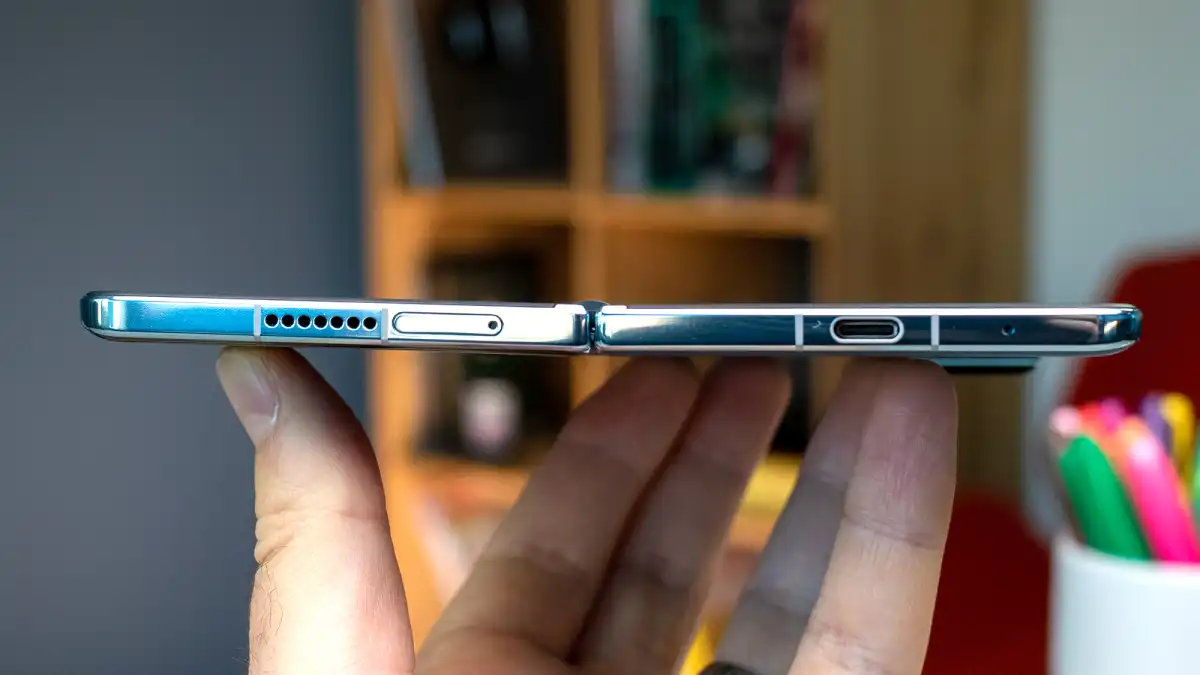
None of the enhancements featured in the foldable-focused Android 12L, like as the taskbar or Google’s own take on multitasking, are available here.
The software version I’m using doesn’t even have an app drawer – a fundamental and basic feature of the Android OS – but I’ve been promised that it will be added in the next update and should be available by the time the phone goes on sale.
The software is the single biggest reason to skip the Magic Vs and buy Samsung’s foldable instead
Honor does have its own vertical split-screen option for running two applications, and it works well, but Samsung and other competitors’ handsets have greater options.
Another annoyance is that every time you open and close the phone, a pop-up notifies you that some applications will not show correctly and advises you re-open them. Only 1Password and Slack have failed to adapt to the shifting aspect ratio, and I’d probably prefer live with those edge instances than be warned every time.
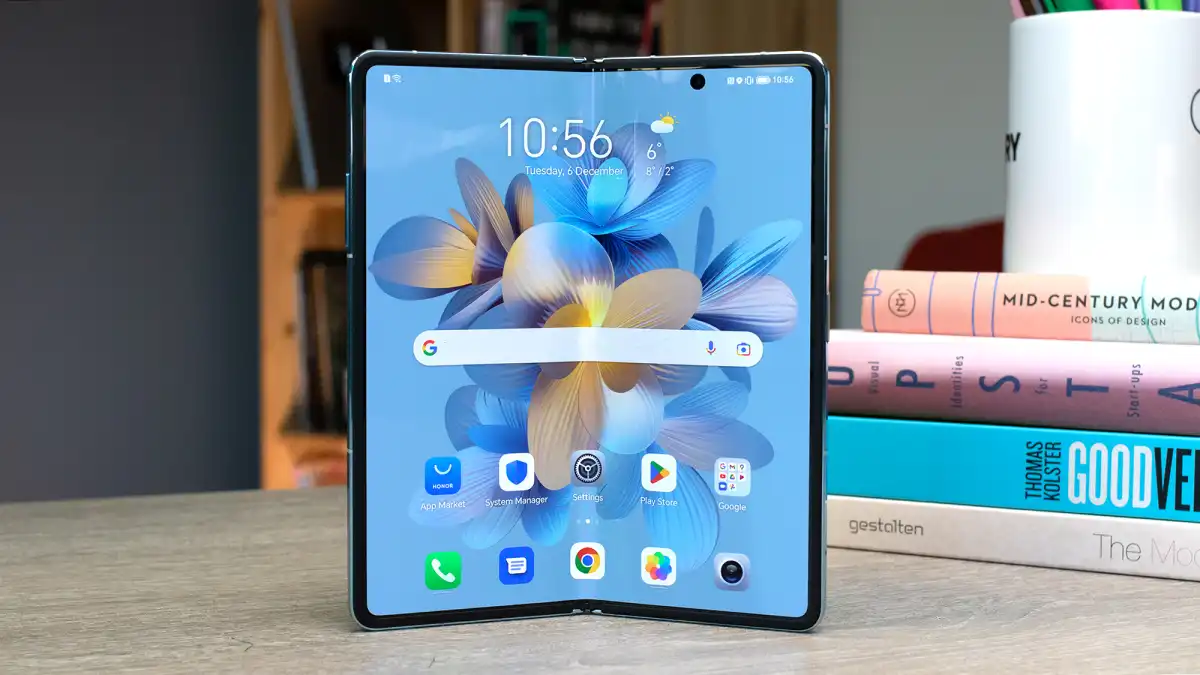
The other software gripe isn’t really Honor’s fault: too many Android applications just aren’t designed to work with the massive, square inner display. Some programs open in smaller windows with letterboxed displays. Some open completely but magnify the material such that almost nothing fits in the display. Video calls are frequently cropped uncomfortably, removing half of the broadcast.
It’s been years since foldables first appeared, yet app support is still lacking, even from key companies like Instagram, Twitter, and WhatsApp. Increased competition from Honor and others should hasten improvement, but for the time being, be prepared to compromise.
Finally, Honor has confirmed that the Magic Vs will receive three years of Android version upgrades, as well as five years of security fixes. That doesn’t quite equal Samsung’s four-year software guarantee, but it’s a significant leap over prior Honor devices, implying that the Magic Vs should last you a few years.
Price & availability
The Honor Magic Vs will be available in the UK on May 19, followed by Europe and Asia. A variant with 12GB of RAM and 512GB storage costs £1,399/€1,599, but if you buy it through the Honor shop before May 26 and subscribe to its email, you may save £200.
At full pricing, it’s roughly £250/€200 less than the Galaxy Z Fold 4, and comes with double the phone’s default storage, with an even wider price difference between it and the Google Pixel Fold.
Verdict
The Honor Magic Vs is an outstanding folding phone that represents a significant improvement over the first-generation Magic V.
The hardware is sleek, with a small shell and solid hinge mechanism, and this basic look and feel clearly outperforms Samsung’s offering. The Magic Vs has a competitive advantage because to faster charging and more powerful back cameras.
However, on a phone at this price range, the lack of software polish is a significant disadvantage, and capabilities like waterproofing and wireless charging appear to be inexcusable omissions.
Honor hasn’t exactly defeated Samsung at its own game, but it deserves credit for being the only manufacturer to try.
Specs
- Android 13 (MagicOS 7.1)
- 7.9in 90Hz foldable OLED, 2272 x 1984
- 6.45in 120Hz exterior OLED, 2560 x 1080p
- Qualcomm Snapdragon 8+ Gen 1 chipset
- 12GB RAM
- 512GB storage
- Camera:
- 54Mp main camera (f/1.9)
- 50Mp ultrawide & macro camera (f/2.0)
- 8Mp 3x optical zoom camera (f/2.4)
- 16Mp front camera (f/2.45)
- Side-mounted fingerprint sensor
- WiFi 6
- Bluetooth 5.2
- NFC
- 5G
- 4900mAh battery
- 66W wired charging
- Dual-SIM
- Height
- 160.3mm
- Width
- Unfolded: 141.5mm, folded: 72.6mm
- Depth
- Unfolded: 6.1mm, folded: 12.9mm


